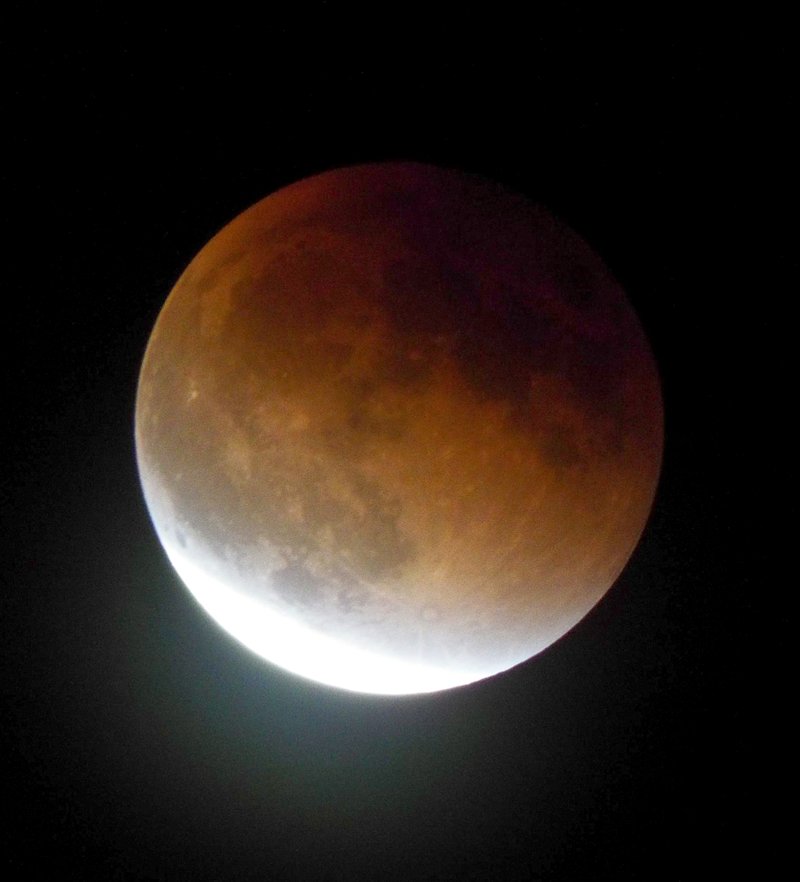GENTRY -- Local residents, if they went outside on Sunday evening, got a rare view of a supermoon eclipse. The combination of a supermoon and a total eclipse has not occurred for 30 years and will not occur again for another 18 years.
The total lunar eclipse covered the closer-than-usual face of the man in the moon for more than an hour. The supermoon is the result of the moon's elliptical orbit around the earth.
"Because the orbit of the moon is not a perfect circle, the moon is sometimes closer to the Earth than at other times during its orbit," said Noah Petro, deputy project scientist for the Lunar Reconnaissance Orbiter at NASA's Goddard Space Flight Center in Greenbelt, Md. "When the moon is farthest away, it's known as apogee; and when it's closest, it's known as perigee. On Sept. 27, [we had] a perigee full moon -- the closest full moon of the year."
According to the NASA website, "at perigee, the moon is about 31,000 miles closer to Earth than at apogee. That distance equates to more than once around the circumference of Earth. Its looming proximity makes the moon appear 14 percent larger and 30 percent brighter in the sky than an apogee full moon, which sparked the term 'supermoon.'"
"There's no physical difference in the moon," Petro said. "It just appears slightly bigger in the sky. It's not dramatic, but it does look larger."
"A lunar eclipse typically puts on an even greater show," according to the NASA website. "For more than an hour, Earth's shadow swallows up the moon as the planet comes between the sun and the moon. Lunar eclipses typically occur at least twice a year, and 228 will occur in the 21st century alone. While people such as the Incans and Mesopotamians historically viewed lunar eclipses as random and frightening occurrences, they're actually quite predictable."
"Scientists at Goddard have predicted eclipses a thousand years into the future," the NASA website states. "Petro said it's just a matter of knowing where Earth, the sun and the moon are at a given point in time."
As for the supermoon and a lunar eclipse occurring simultaneously, Petro said, "It's just planetary dynamics. The orbit of the moon around Earth is inclined to the axis of Earth and the orbital plane of all these things just falls into place every once in a while. When the rhythms line up, you might get three to four eclipses in a row or a supermoon and an eclipse happening."
"But the proverbial stars only align for this event once every few decades, making this phenomenon much rarer than a supermoon or a lunar eclipse separately," the NASA website states.
The last supermoon and lunar eclipse combination occurred in 1982 and the next one won't happen until 2033.
"That's rare because it's something an entire generation may not have seen," said Petro.
General News on 09/30/2015

